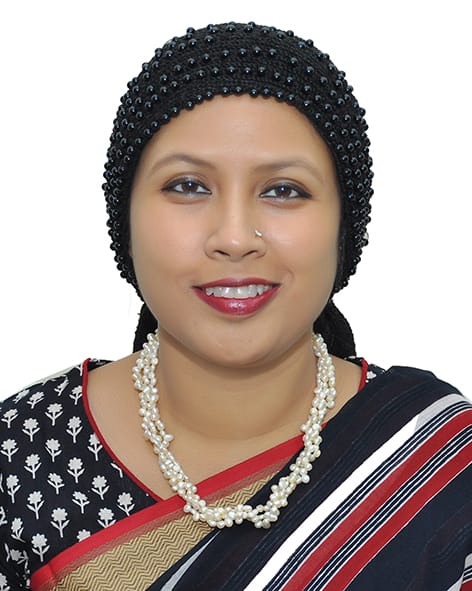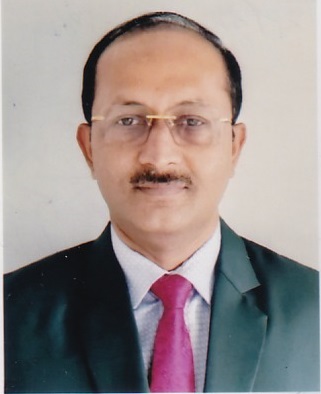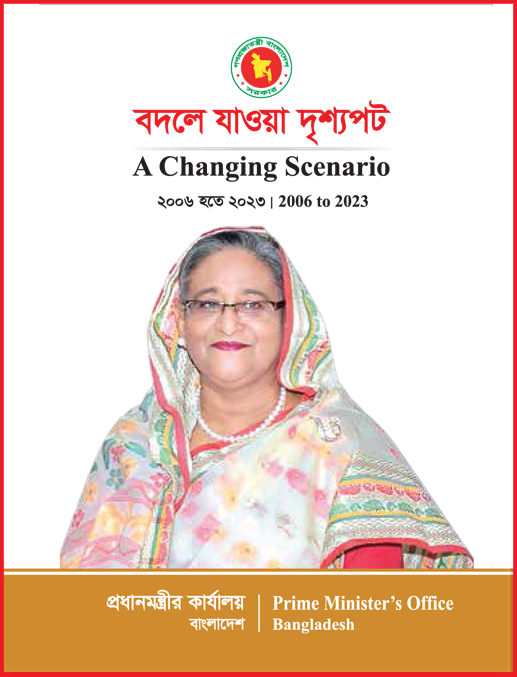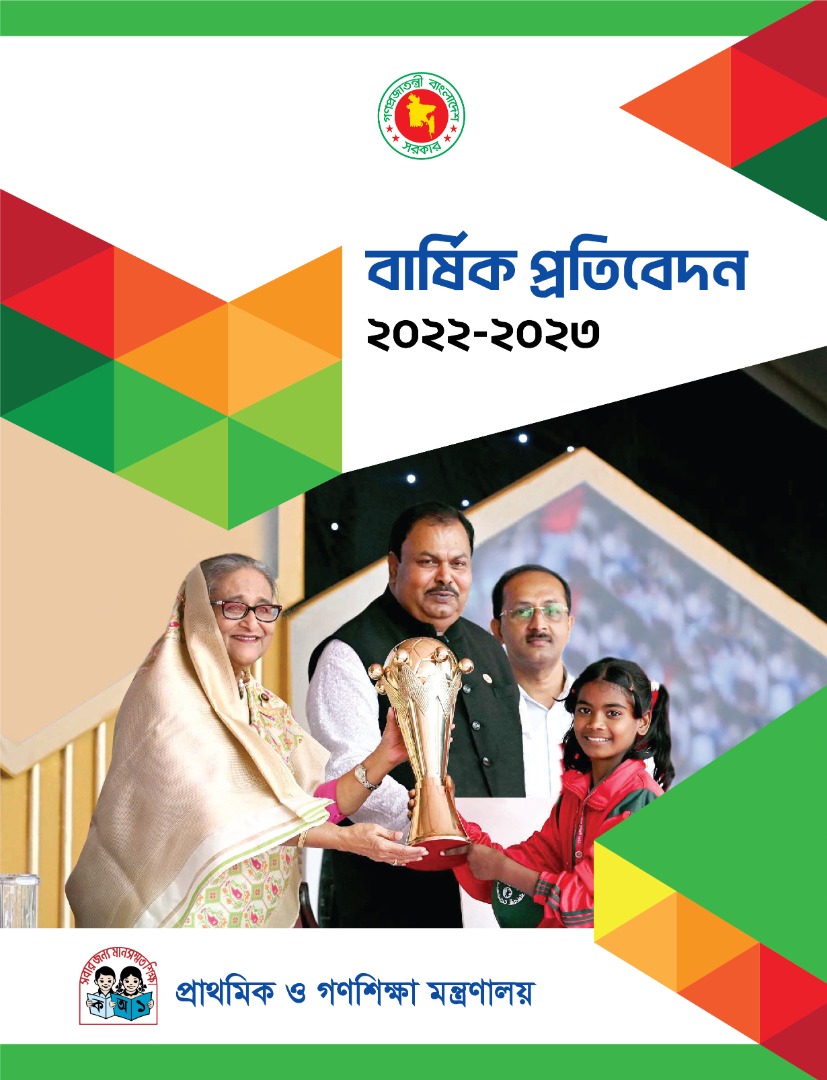দ্বিতীয় প্রাথমিক শিক্ষা উন্নয়ন কর্মসূচী
2.A Demographic Context
2.1 Bangladesh population has grown from 44.1 million in 1951 to 129.25 million in 2001 (BBS). The inter-census growth between 1991 and 2001 was 1.48 percent against 2.18 percent between 1981 and 1991. Despite the sharply decreasing pace of growth, the age structure has a built-in growth potential due to the stagnating fertility rate during 1997-2000 at 3.3 percent against 4.3 percent in 1991 and 3.4 percent in 1996 (BBS, 1999 and BDHS, 1999-2000).
Population Projection
2.2 Population projections are based on specific assumptions about future changes in birth, death, and migration rates. The most important component is the change in fertility rate. The series of CBR, CDR, age-specific and total fertility rates as obtained from different sources like BBS, BFS, CPS, ICCDR, B, BDHS and others show the transition stage of fertility with annual change of TFR at 0.078 points in Bangladesh. Different organizations have made population projections under different assumptions of TFR, other related parameters of population dynamics and the year of achieving NRR 1. Unless the stagnating pre-2001 TFR improves substantively, achievement of NRR 1 before 2010 is quite unlikely. This NPA makes the calculations and projections for basic education on an estimated population of 163 million (BBS projection is 159.7 million) in 2015.
Population Projection for basic education by Age Groups
2.3 For the purpose of planning of basic education, the population figures for early childhood care and education (3-5 years), primary education (6-10), “second chance” primary and NFBE (11-14), and secondary and higher secondary education (11-17) are required. For projection of enrolment, the 5- year intervals of population given in 1991 census report have been converted into single year figures by using the Sprague's multipliers, commonly used in education. The population figures for basic education by actual age group for early childhood, primary, secondary, higher secondary (the secondary and higher secondary are shown as intervals as basic education also cover illiterate adults) and adult age groups are given in Table 2.1 below.
Table 2.1: Population Projection of Bangladesh for Early Childhood, Primary, Second Chance Primary/Secondary, Higher Secondary levels and adult education age groups, 2000-2015
|
Age Group |
Base Year |
Projection by Selected Years (In 000s) |
|||
|
2000 |
2005 |
2010 |
2015 |
Total population in 2015 |
|
|
3 |
3173 |
3168 |
2849 |
3002 |
|
|
4-5 |
6183 |
6322 |
5879 |
6229 |
|
|
3-5 |
9356 |
9490 |
8728 |
9231 |
|
|
6-10 |
15685 |
15867 |
15884 |
15211 |
|
|
11-15 |
15822 |
15503 |
15728 |
15765 |
|
|
16-17 |
6364 |
6163 |
6096 |
6242 |
|
|
15-24 |
29683 |
31038 |
30784 |
30956 |
|
|
15-44 |
66066 |
73540 |
79831 |
84871 |
|
|
15+ |
84640 |
95800 |
106508 |
117106 |
163200 |
Source: Projections made by -The World Bank, UNFPA, Planning Commission, BBS
2.B. The Social Context
2.4 Though traditionally rural, Bangladesh society is undergoing extremely rapid changes. Land used to be the source both of wealth and income and of power and status in rural Bangladesh. This centrality has undergone drastic changes. Land is no longer the principal basis of power and status; neither does it serve to limit the livelihood opportunities of the poor. The subsistence orientation of production too has given way to a more complex and fluid livelihood strategy. The dramatic expansion of all-weather rural infrastructure which began from the late 1980s has also brought about a qualitatively new degree of connectedness between the rural and urban areas. Migration and remittances have emerged as dominant factors in household dynamics. However, while poverty has declined, it continues to define the lives of a significant proportion of the population. At the same time, growing inequality is a rising concern.
2.5 The role of women in economic and social activities has improved over time making a major contribution to poverty reduction. Participation of women has increased both in wage employment (2 million jobs in the RMG sector) and self-employment (women are the dominant clients of microfinance schemes). Women are providing cash contribution to household incomes and with higher cash incomes are better able to access health services. This has led to a decline in infant mortality from 161 at independence to 66 currently: the rate of decline has been most spectacular in the 1990s. Women’s social mobilization and a very successful family planning programs has led to reduced fertility rates. Notwithstanding such progress, vulnerability of women remains significant and women continue to have a limited voice in political and policy arenas.
2.6 Child labour is quite a significant problem: CLS 2002-03 counted 7.4 million working children of whom 3.2 million were classified as child labour. Of the latter, 1.3 million children were found engaged in hazardous work (BBS, 2003). There are also estimates of nearly 600,000 children who live on urban streets and slums. The government runs two programs for urban working children and one for the street childre
2.7 The institutional environment has witnessed a significant diversification. NGOs from the 1980s and the private sector in the 1990s have emerged as major new social forces. Though traditionally very weak, Union Parishds (rural local governments) are gradually asserting their indispensability for the critical tasks of poverty reduction and MDG attainment. However, the overall governance continues to be marked by a number of major weaknesses. These include significant capacity deficits across government, rigid administrative orientation of public service, centralized decision-making, endemic corruption and uneasy interface of administrators and politicians.
2.8 Perhaps the most important story of the changing social context of Bangladesh, however, is one not found in statistics or in scholarly analysis. While poverty and poor governance remain dominant realities, it is also true that the people of Bangladesh, in particular its poor, have undergone something of a personality revolution. They have become more assertive, pro-active towards opportunities, clearer on life-goals. The social reality may not have lost its oppressive features but the poor men and women of rural and urban Bangladesh are new protagonists on the scene and societal outcomes are very much open. With perseverance and determination, they are forging a new ground reality of initiatives and aspirations which refuses to be content with the vagaries of an illiterate, poverty-laden fate.
2.C The Economic Context
2.9 Despite poor initial conditions and high vulnerability to natural disasters, Bangladesh has largely overcome its food security problems and achieved a steady economic growth. Real annual GDP growth averaged 5.3% during 2000-2004 up from 4.8% in the 1990s and 3.5% in the 1980s. Latest growth figures are over the 6% mark. GDP has grown to be over 60 billion US dollars. Although income inequality has increased, the poor benefited from the growth process with a decline in rural and urban poverty. The economy has undergone significant transformation with remittances and exports, particularly from the readymade garments sector playing leading roles. Pro-poor public expenditures directed at rural infrastructures have contributed to agricultural diversification and a significant increase in non-farm activity, employment and income.
2.10 Despite considerable progress, poverty remains dauntingly high. Though estimates differ, the proportion of the population in poverty in 2000 was between 40 and 50 percent (PRS, 2005). Over the past two decades, progress in reducing human poverty proceeded faster than the progress in reducing income poverty due largely to the positive effects of substantial public investment in education and health on the one hand and the contribution of NGOs in many economic and social empowerment activities on the other.
2.11 PRS has rightly identified employment generation as one of the core strategic priorities and this has highlighted the need to significantly enhance the policy focus on improving skills at all levels of the labour market. Though Bangladesh has emerged as a major supplier of overseas migrant labour, much of these are at the lower end of the skill spectrum. An increasingly diversified domestic economy too demands skilled hands with which the current white collar orientation of public education is at odds. An educational focus which puts priority in improving skills across the spectrum and facilitates promotion of and rapid diffusion of appropriate technology, including ICT, is likely to take the country significantly forward towards the increasingly plausible goal of graduating to a middle income status.
.jpg)
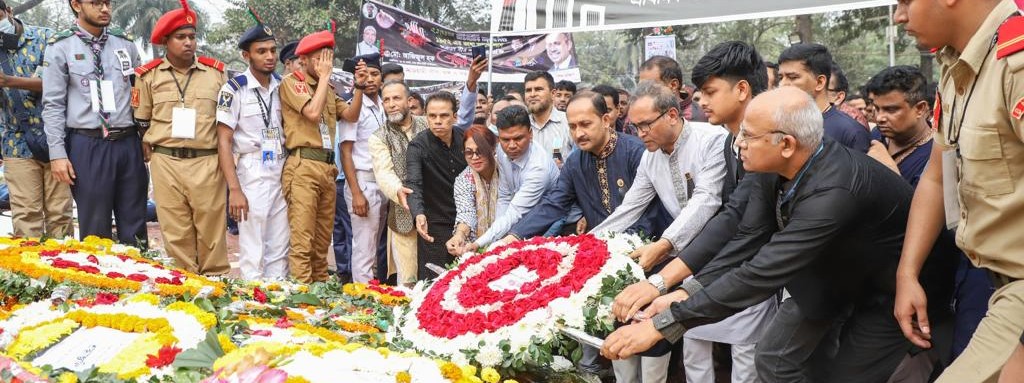
.jpg)


